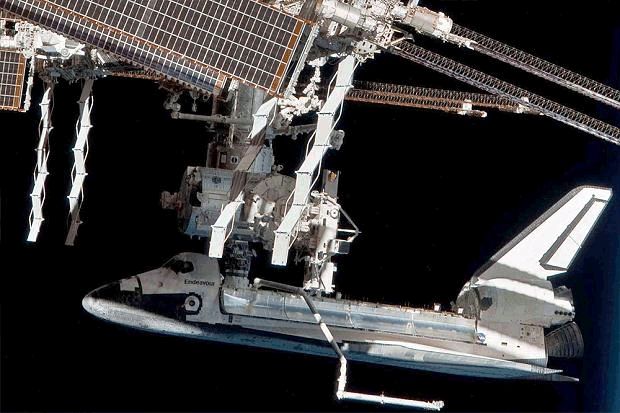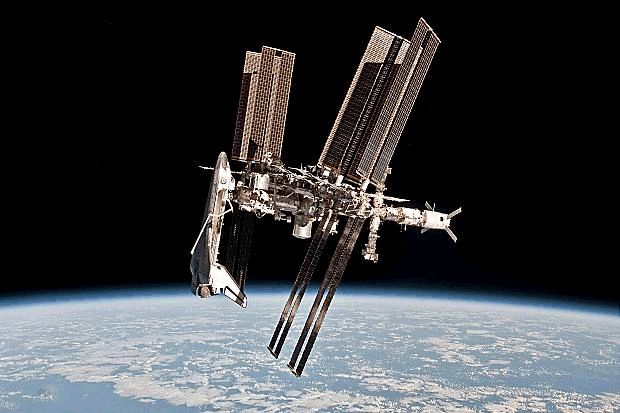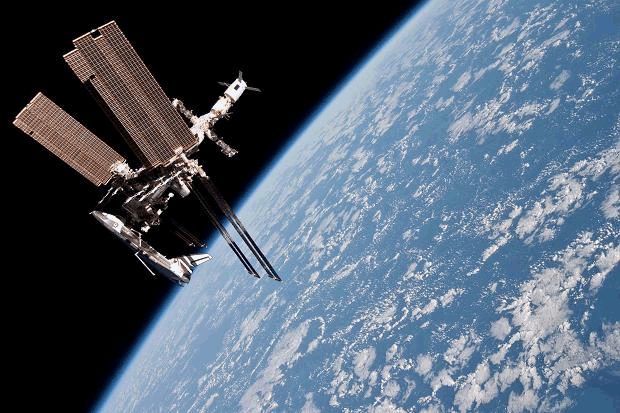



Source: TimesOnline of June 9 2011
It took 13 years and $100 billion to get all the subject matter in place — but as family portraits go, this set was worth the wait.
New images released by Nasa and the European Space Agency capture the splendour of the International Space Station soaring 220 miles above Earth, with a space shuttle docked at its US-owned Harmony module.
It is the first time that the ISS has been officially photographed fully assembled and with a shuttle in its parking bay. It will also be the last. The shuttle shown is Endeavour, which flew its final mission last month, and only one more mission remains as Atlantis is prepared for a launch next month.
The feat was pulled off only after weeks of negotiations between Nasa, Esa and the Russian space agency Roscosmos, because of the intricate choreography required to get all parties in the best position, without the Sun shining into the eyes of the Soyuz’s commander, Dmitry Kondratyev.
The photographs were snapped through the window of a Russian Soyuz spacecraft by Paolo Nespoli, an Italian astronaut, as the vehicle performed a fly-around of the giant orbiting laboratory.
Like all good photographic models, the ISS even posed for its close-up; once the Soyuz was safely undocked and 600ft away, mission controllers in Moscow gave the order for the ISS to rotate 130 degrees to show its best side as it hurtled around the planet at 17,500mph.
The pictures were taken on May 23 but have taken two weeks to release after Major Nespoli left the camera’s memory card in the Soyuz when he climbed out after its hard landing in the Kazakhstan desert later the same day. Officials had to wait for the Soyuz to be shipped back to base before the card could be retrieved.
The $8,000 worth of Nikon D3-X camera equipment that he used did not make it, however. It was jettisoned inside the Soyuz’s orbital module — which breaks away as a matter of routine when the spacecraft descends, to shed weight – and burned up in the Earth’s atmosphere.
Kenneth Todd, chair of Nasa’s space station mission management team, said: “Hopefully those pictures will show up in textbooks for years to come.” He hoped that people would appreciate their uniqueness.
“I would like to think that they’d look back on their history and look back at what we accomplished between these two very, very large programmes and the technology and the engineering that went into making the space shuttle do what it has done for this country … and see that it was quite a feat to go do this.”
|



